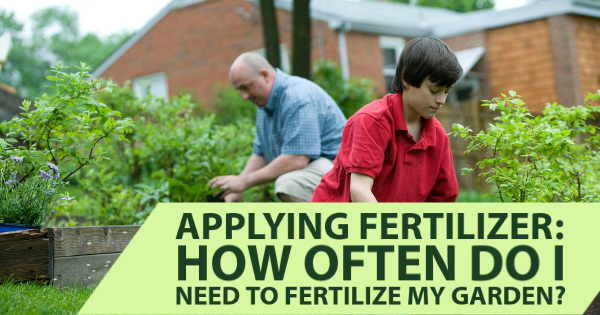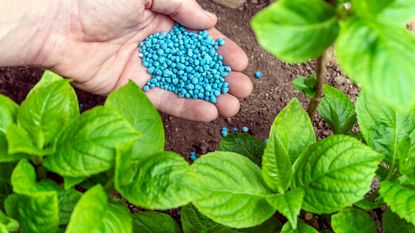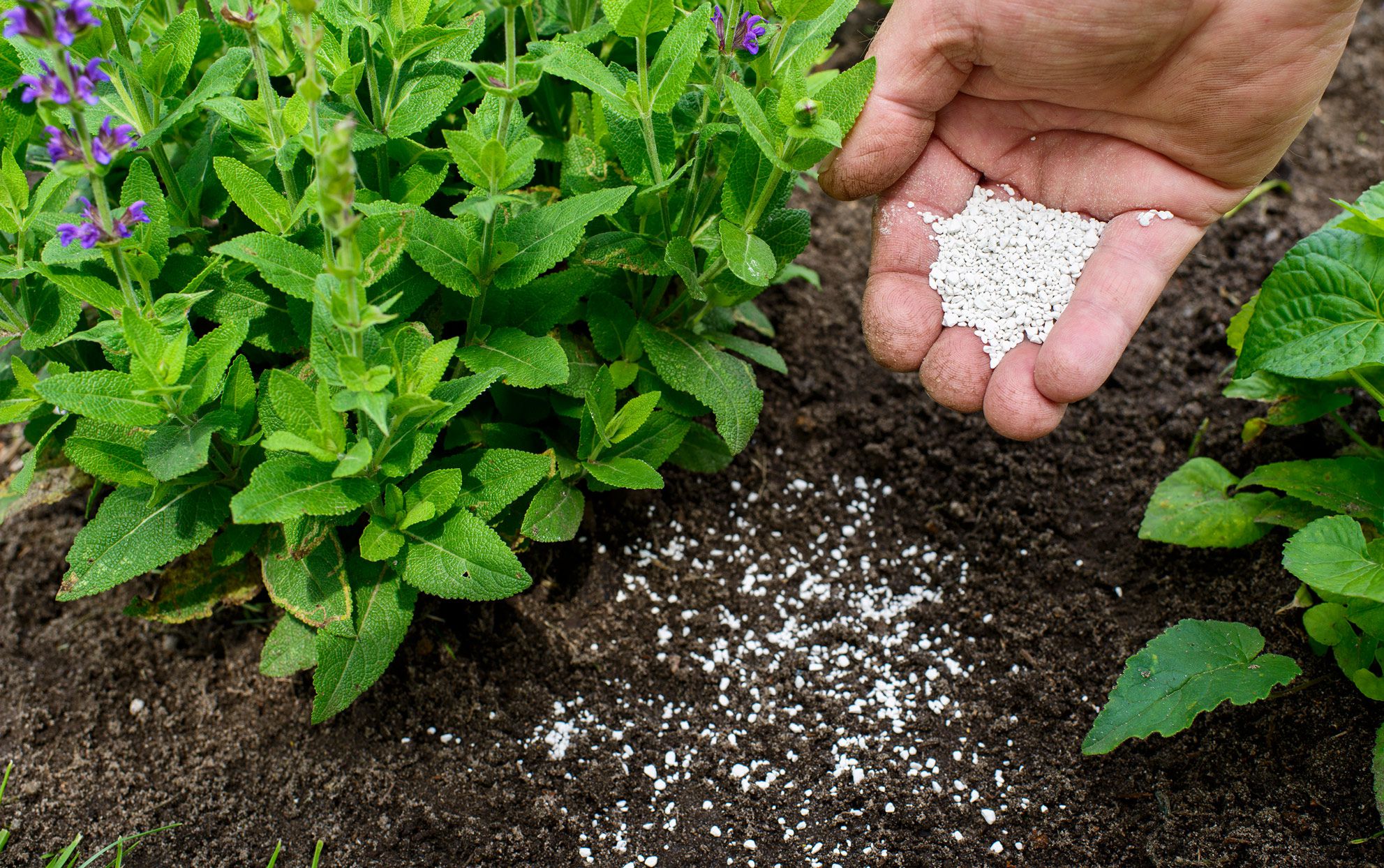As an Amazon Associate, I earn from qualifying purchases.
The best time to fertilize outdoor plants is early spring or late fall. This ensures optimal nutrient absorption and growth.
Fertilizing outdoor plants at the right time is crucial for their health and productivity. Early spring fertilization supports new growth after winter dormancy. Late fall fertilization helps plants store nutrients for the upcoming winter. Proper timing ensures that plants receive essential nutrients when they need them most.
This practice promotes stronger roots, vibrant foliage, and better resistance to pests and diseases. Understanding your plant’s specific needs and local climate conditions can further enhance the effectiveness of fertilization. By following these guidelines, gardeners can achieve lush, thriving gardens year-round.

Credit: schwartzgreenhouse.com
Introduction To Fertilizing Outdoor Plants
Fertilizing outdoor plants is crucial for a lush garden. Plants need nutrients to grow strong and healthy. Fertilizers provide these essential nutrients. Without proper fertilization, plants may struggle. They might show signs of poor health and reduced growth.
Importance Of Fertilization
Fertilization is key for plant growth. Nutrients like nitrogen, phosphorus, and potassium are vital. These nutrients help plants grow bigger and healthier. Fertilization improves soil quality. It also enhances the plant’s ability to absorb water. Proper fertilization leads to vibrant flowers and bountiful fruits.
Fertilizing at the right time is essential. This ensures plants get nutrients when they need them most. Early spring is often the best time. It helps plants start their growth cycle strong. Late summer or early fall can also be good. This prepares plants for the winter.
Common Fertilization Myths
There are many myths about fertilizing. One myth is that more fertilizer is always better. This is not true. Too much fertilizer can harm plants. It can lead to nutrient burn and soil imbalance.
Another myth is that fertilization is only needed once. Plants need regular fertilization for continuous growth. Some believe organic fertilizers are always best. While they are great, synthetic options can also be beneficial. Each type has its own advantages.
Some gardeners think fertilization isn’t needed in poor soil. This is false. Poor soil often lacks essential nutrients. Fertilization can help improve soil quality. It provides the nutrients plants need to thrive.

Credit: www.reddit.com
Understanding Plant Growth Cycles
Understanding plant growth cycles helps in determining the best fertilization times. Plants have specific needs during different growth phases. Knowing these cycles ensures healthy and robust plants.
Seasonal Growth Patterns
Plants follow seasonal growth patterns. During spring, plants experience rapid growth. This period is perfect for fertilization. Spring provides the best conditions for nutrient absorption.
In summer, plants continue to grow but at a slower pace. Fertilize them to sustain growth. Fall is a time for root development. Fertilizing in fall strengthens roots for winter. Winter is usually a resting period for most plants.
| Season | Plant Activity | Fertilization |
|---|---|---|
| Spring | Rapid Growth | High |
| Summer | Moderate Growth | Moderate |
| Fall | Root Development | High |
| Winter | Dormant | Low |
Dormant Vs. Active Phases
Plants have dormant and active phases. Understanding these phases is key to proper fertilization. During the active phase, plants grow and develop. Fertilize them regularly during this time. Nutrients support their growth and health.
The dormant phase is a rest period. Plants conserve energy and do not grow actively. Fertilizing during dormancy is less effective. It may even harm the plants.
- Active Phase: Rapid growth, nutrient absorption, regular fertilization needed.
- Dormant Phase: Energy conservation, minimal growth, limited fertilization.
Observe your plants closely. Knowing their growth cycles ensures proper care and fertilization. Healthy plants result from understanding these patterns.
Optimal Fertilization Times
Fertilizing outdoor plants at the right time ensures they grow healthy and strong. Knowing the optimal times to fertilize helps your garden thrive. Below, we explore the best times to fertilize during the year.
Spring Fertilization
Spring is a key time for fertilizing plants. As temperatures rise, plants awaken from winter dormancy. Early spring fertilization provides essential nutrients for new growth.
Early Spring: Apply a balanced fertilizer when soil starts to warm.
- March to April is ideal.
- Use a slow-release fertilizer.
Late Spring: A second application helps sustain growth.
- May to June is perfect.
- Avoid over-fertilizing; follow package instructions.
Fall Fertilization
Fall fertilization prepares plants for the winter months. It strengthens roots and enhances survival.
Early Fall: Apply fertilizer after the summer heat.
- September to October is suitable.
- Focus on root growth formulas.
Late Fall: A light feeding supports winter readiness.
- November can be optimal.
- Avoid high nitrogen fertilizers.
Types Of Fertilizers
Understanding the types of fertilizers can help your plants thrive. Different fertilizers provide unique benefits to your garden. Let’s explore the two main categories: organic fertilizers and synthetic fertilizers.
Organic Fertilizers
Organic fertilizers come from natural sources. They include compost, manure, and bone meal. These fertilizers release nutrients slowly. This helps plants grow steadily over time. They also improve soil structure and health.
Here are some common types of organic fertilizers:
- Compost: Made from decomposed organic matter. It enriches the soil.
- Manure: Animal waste that adds essential nutrients.
- Bone Meal: Ground animal bones. It’s high in phosphorus.
- Fish Emulsion: Liquid fertilizer from fish waste. It provides quick nutrients.
These fertilizers are eco-friendly and safe for the environment. They promote long-term soil health and sustainability.
Synthetic Fertilizers
Synthetic fertilizers are man-made. They provide nutrients quickly to plants. These fertilizers are formulated to target specific plant needs. They are often labeled with N-P-K ratios, indicating nitrogen, phosphorus, and potassium content.
Here are some common types of synthetic fertilizers:
- Granular Fertilizers: These are dry, pellet-like. Easy to apply.
- Liquid Fertilizers: Quick-acting and mixed with water. Ideal for fast results.
- Slow-Release Fertilizers: Release nutrients over time. They reduce the need for frequent applications.
- Specialty Fertilizers: Formulated for specific plants or growth stages.
While synthetic fertilizers provide quick results, they can sometimes harm soil health. Overuse may lead to nutrient imbalances and environmental issues.
| Type | Source | Benefits | Drawbacks |
|---|---|---|---|
| Organic | Natural | Improves soil health | Slow nutrient release |
| Synthetic | Man-made | Quick nutrient supply | Can harm soil |
Soil Testing And Analysis
Soil testing and analysis are crucial for healthy outdoor plants. It helps determine the best time to fertilize. Understanding your soil’s needs ensures your plants get the right nutrients.
Importance Of Soil Testing
Soil testing reveals the nutrient levels in your garden. It identifies deficiencies and helps you choose the right fertilizer. This process ensures your plants grow strong and healthy.
Without testing, you might over-fertilize or under-fertilize. Both can harm your plants. Testing saves money and time by guiding your fertilization efforts.
How To Test Your Soil
Testing your soil is simple and can be done at home or through a lab.
- Collect soil samples from different spots in your garden.
- Mix the samples in a clean container.
- Remove any debris like roots or stones.
- Send the sample to a lab or use a home testing kit.
Home testing kits are affordable and easy to use. They provide instant results for pH, nitrogen, phosphorus, and potassium levels. Labs offer more detailed analysis.
Refer to the table below for common nutrient levels and their meanings:
| Nutrient | Optimal Level | Deficiency Symptoms |
|---|---|---|
| Nitrogen | 20-40 ppm | Yellowing leaves, poor growth |
| Phosphorus | 10-20 ppm | Purple leaves, weak roots |
| Potassium | 40-80 ppm | Brown leaf edges, weak stems |
Regular soil testing helps maintain your garden’s health. It ensures your outdoor plants thrive throughout the growing season.

Credit: www.gardeningknowhow.com
Weather Considerations
Understanding weather conditions is vital for fertilizing outdoor plants. The right timing can enhance plant growth and health. This section explores how rainfall and temperature affect fertilization schedules.
Impact Of Rainfall
Rainfall influences how well plants absorb nutrients. Heavy rain can wash away fertilizers, reducing their effectiveness. Light rain, however, helps dissolve fertilizers, making them more accessible to plants.
- Heavy Rain: Washes away nutrients.
- Light Rain: Helps dissolve fertilizers.
Avoid fertilizing just before heavy rain. This prevents nutrient runoff and waste. Light rain, on the other hand, can be beneficial. It aids in the gradual release of nutrients.
Temperature Effects
Temperature significantly impacts plant growth and nutrient absorption. Extreme temperatures can hinder fertilizer effectiveness. Ideal fertilization occurs during moderate temperatures.
| Temperature | Effect |
|---|---|
| Below 50°F (10°C) | Slows nutrient absorption. |
| 50°F to 85°F (10°C to 29°C) | Optimal for fertilization. |
| Above 85°F (29°C) | Can stress plants. |
Fertilizing during moderate temperatures ensures plants absorb nutrients efficiently. Avoid extremely cold or hot days for best results.
Fertilizing Different Plant Types
Each plant type has its unique nutrient needs. Timing your fertilization correctly ensures healthy growth. Here’s a guide to fertilizing different plant types.
Flowering Plants
Flowering plants thrive with balanced fertilizers. Feed them early in the growing season. This boosts their bloom potential.
Perennials need feeding in early spring. Apply a slow-release fertilizer. Annuals benefit from monthly feeding. Use water-soluble fertilizers for quick absorption.
| Plant Type | Fertilizer Type | Best Time to Apply |
|---|---|---|
| Perennials | Slow-release | Early Spring |
| Annuals | Water-soluble | Monthly |
Vegetables And Herbs
Vegetables need regular feeding. Use a high-nitrogen fertilizer. Apply every three weeks during the growing season.
Herbs prefer a balanced fertilizer. Feed once a month. Avoid over-fertilizing. This can reduce flavor quality.
- Leafy Greens: High nitrogen, every three weeks.
- Root Vegetables: Balanced fertilizer, every month.
- Fruit-bearing Vegetables: High potassium, every three weeks.
Expert Tips For Effective Fertilization
Knowing when to fertilize outdoor plants can make a huge difference. Proper fertilization helps plants grow healthy and strong. These expert tips will guide you to fertilize effectively.
Dos And Don’ts
| Dos | Don’ts |
|---|---|
| Test soil before fertilizing | Don’t over-fertilize |
| Use organic fertilizers | Avoid fertilizing in extreme heat |
| Water plants after fertilizing | Don’t fertilize too close to the roots |
Common Mistakes
- Over-fertilizing: Too much can burn plants.
- Wrong timing: Fertilize during the growing season.
- Ignoring soil type: Different soils need different fertilizers.
- Using the wrong fertilizer: Match fertilizer to plant needs.
Frequently Asked Questions
When Should I Start Fertilizing Outdoor Plants?
Start fertilizing outdoor plants in early spring. This timing provides essential nutrients for new growth.
How Often Should I Fertilize My Outdoor Plants?
Fertilize outdoor plants every 4-6 weeks during the growing season. Consistent feeding promotes healthy development.
What Type Of Fertilizer Is Best For Outdoor Plants?
Choose a balanced, slow-release fertilizer for outdoor plants. This type ensures steady nutrient supply over time.
Can I Fertilize Outdoor Plants In Summer?
Yes, you can fertilize in summer. However, avoid fertilizing during extreme heat to prevent plant stress.
Conclusion
Choosing the right time to fertilize outdoor plants is crucial. Spring and fall are generally the best seasons. Always follow specific plant needs and local climate conditions. Proper fertilization promotes healthy growth and vibrant blooms. By timing it right, your garden will thrive throughout the year.
Happy gardening!

